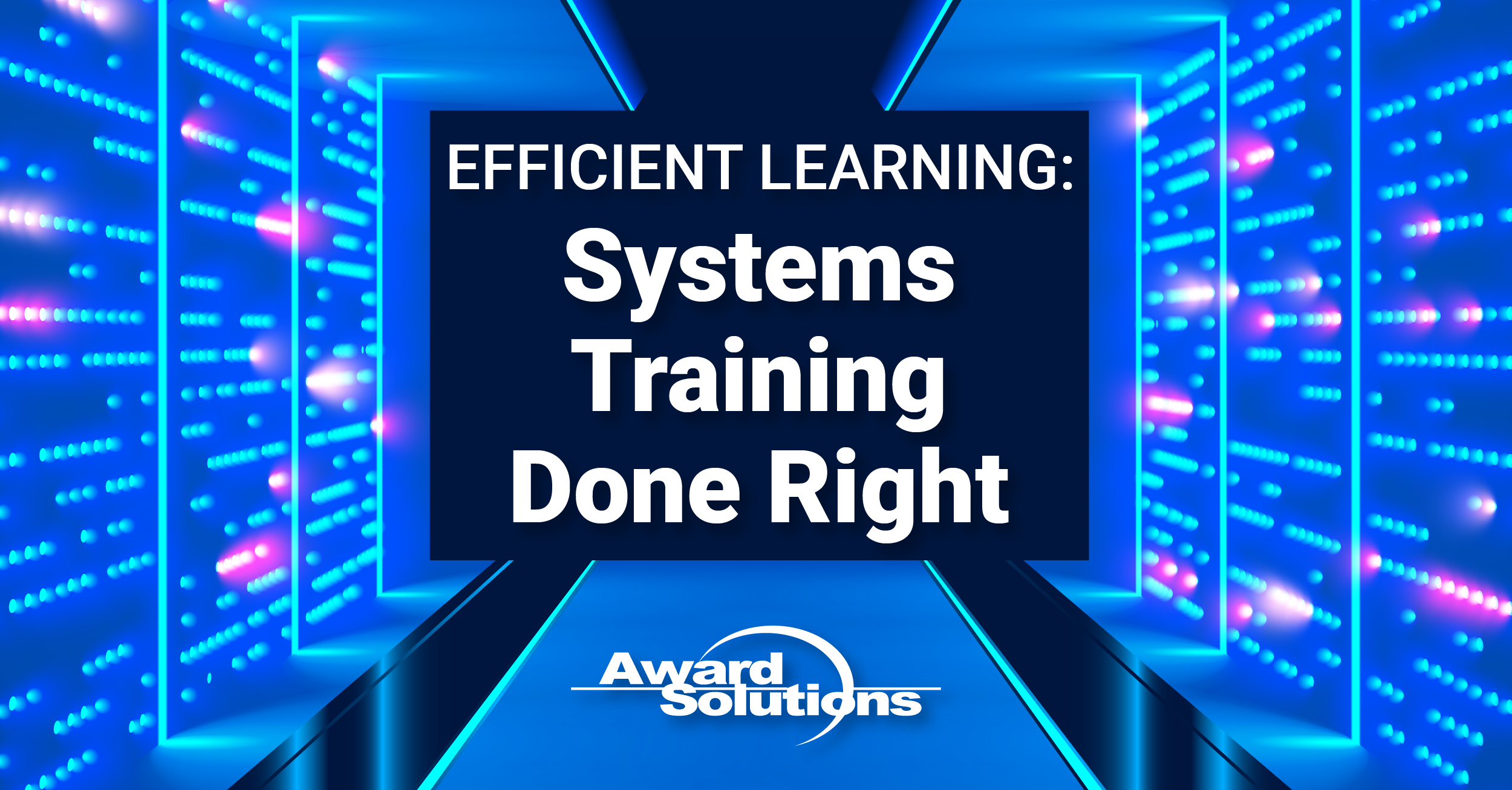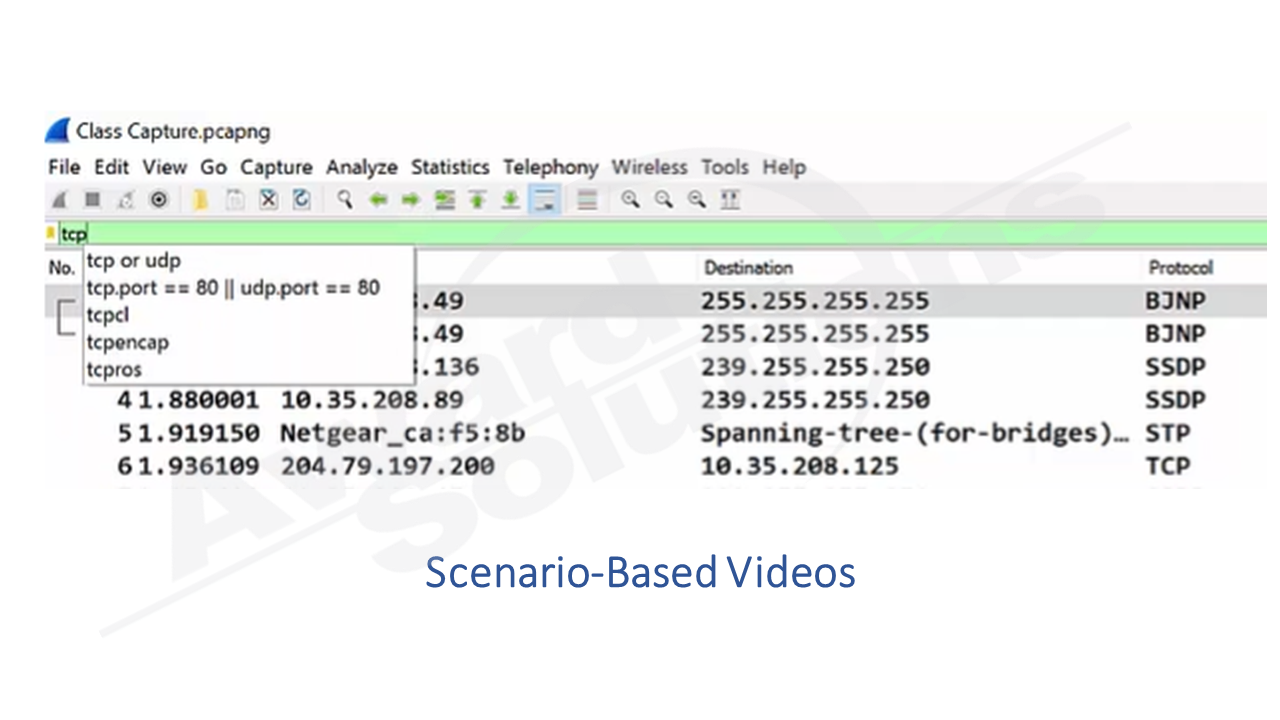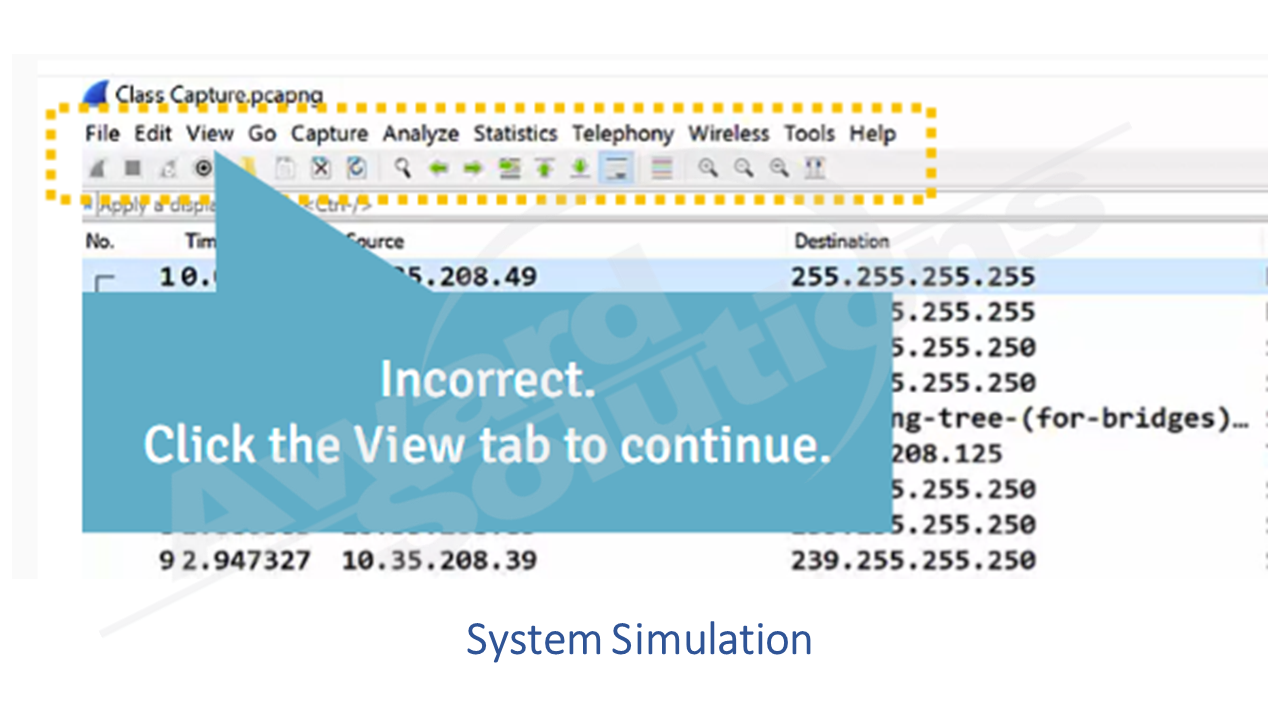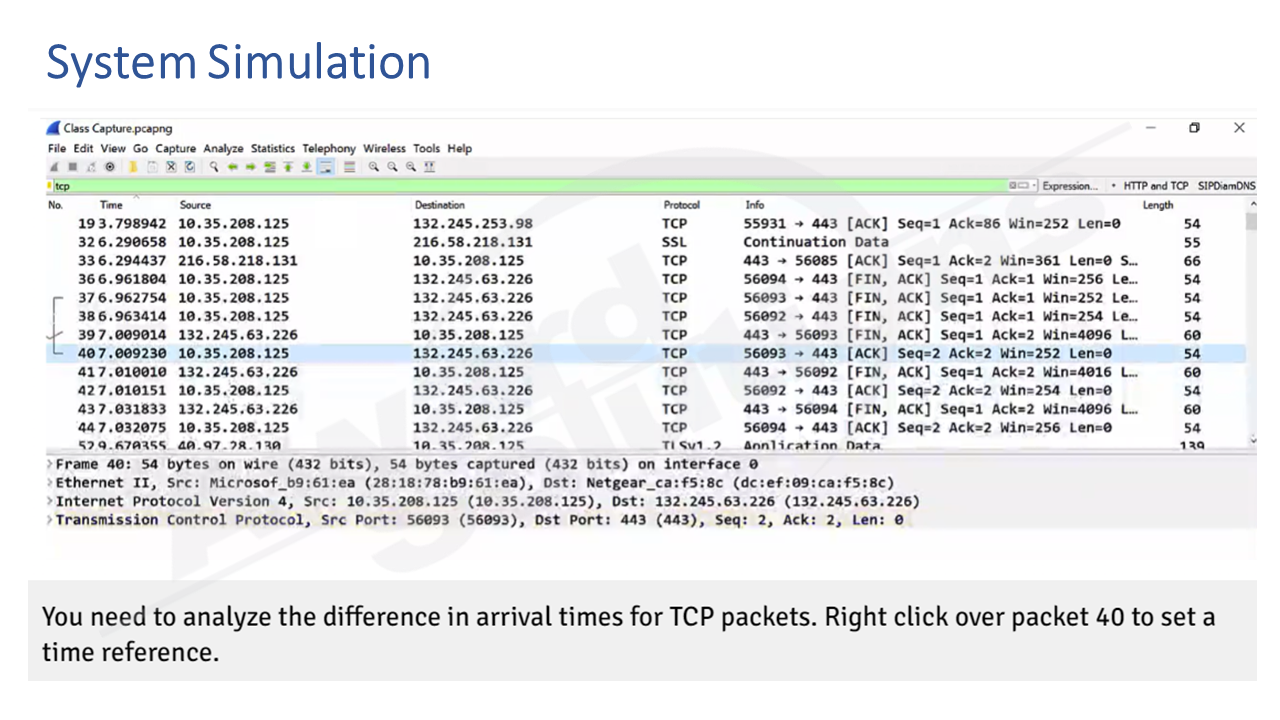
Systems training is an integral part of the learning landscape. New software programs are always being introduced and updated, and companies often choose to develop custom software to serve their workflows and practices. Systems training is one of Award Solutions' areas of expertise, and to help students learn efficiently and effectively, we use a combination of scenario-based videos and system simulations. In this example, we'll use the example of Wireshark, an open-source application that can capture, display, and analyze network traffic data.
Scenario-Based Videos
Scenario-based videos demonstrate software functionality visually and interactively. Using these videos, learners can see how to navigate the user interface and perform specific tasks.

Each video can provide a real-world example of how to use the system, like setting a filter. Learners can see best practices for using the system, like efficient workflows, shortcuts, and tips for avoiding common errors. This type of training helps users hit the ground running and reduce their initial learning curve.
Scenario-based videos depict realistic and relatable situations and keep users interested and motivated to learn the system. They're more effective than simple how-to videos because they provide context and demonstrate practical applications, making the training more relevant.
System Simulation
Another option is realistic interactive simulations that replicate an actual system. This type of training can mimic the behavior and function of the program, allowing users to interact with it in a controlled environment.

Simulations make it easier for students to learn the program by providing guided instructions with real-time feedback.
They also offer opportunities for problem-solving in a controlled environment with minimal risk to any in-production data. This Wireshark simulation can demonstrate how different types of traffic look and behave, making it easier for users to learn to identify and understand patterns and anomalies.

Simulations can be used to teach programs at all levels, from beginners to advanced users. Beginners can start with simulations that demonstrate basic features and user interface navigation. Advanced users can work through more complex simulations that imitate real-world scenarios.
Putting It All Together
One approach we've used at Award Solutions is to present a scenario-based video, followed by the opportunity to physically practice each process in a simulated interactive environment that mimics real-world situations. Combining short videos with physical practice helps the course flow and engages visual, auditory, and motor pathways in the brain, keeping the user engaged and interested in the learning process.
These pathways in the brain are like roads that allow information to travel between different parts of the brain. The more connections we create, the easier it is for information to flow and for us to learn and remember things.
Simultaneously activating multiple neural pathways can improve learning and retention because it strengthens these connections. For example, when we learn something using different methods, like combining scenario-based videos and system simulations, we activate multiple neural pathways in the brain simultaneously, actively engaging the user in learning and helping them stay focused and motivated, which can lead to better learning and retention.
Conclusion
At Award Solutions, one of our specializations is systems training. As new software programs are frequently introduced, and companies continue to develop custom software for their workflows, getting users quickly up to speed is crucial. We use scenario-based videos and system simulations to efficiently and effectively teach users how to navigate systems. Scenario-based videos provide context and practical applications, while interactive simulations replicate the system's behavior and function, enabling users to interact with it in a controlled environment. Award Solutions combines these methods to engage the user and improve learning and retention.
About Lisa Stringer
Lisa Stringer is a digital learning designer at Award Solutions, where she creates stories to help people learn more about technology topics like Python, cyber security, and 5G.
About Award Solutions, Inc.
Award Solutions is the trusted training partner to the world's best networks. We help companies tackle new technologies by equipping their teams with knowledge and skills. Award Solutions invests heavily in technology, research, engineering, and labs to ensure our customers make the most of their resource and network investments.
Award’s expertise extends across many technologies including 5G/LTE Access 5G/4G Core, VoNR/VoLTE, Transport Networks, Telco Cloud, Virtualization and Orchestration, Data Automation, and more.
